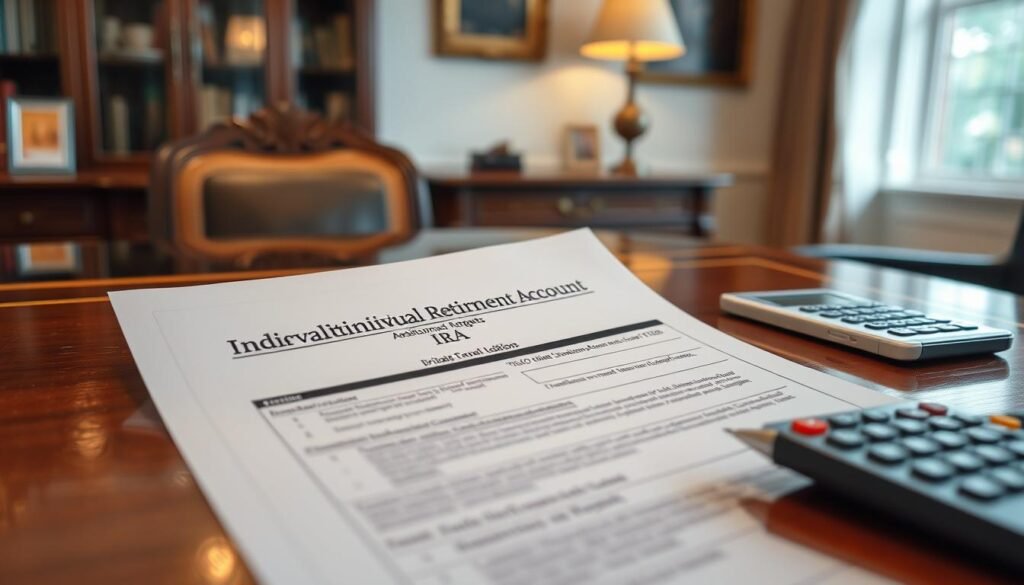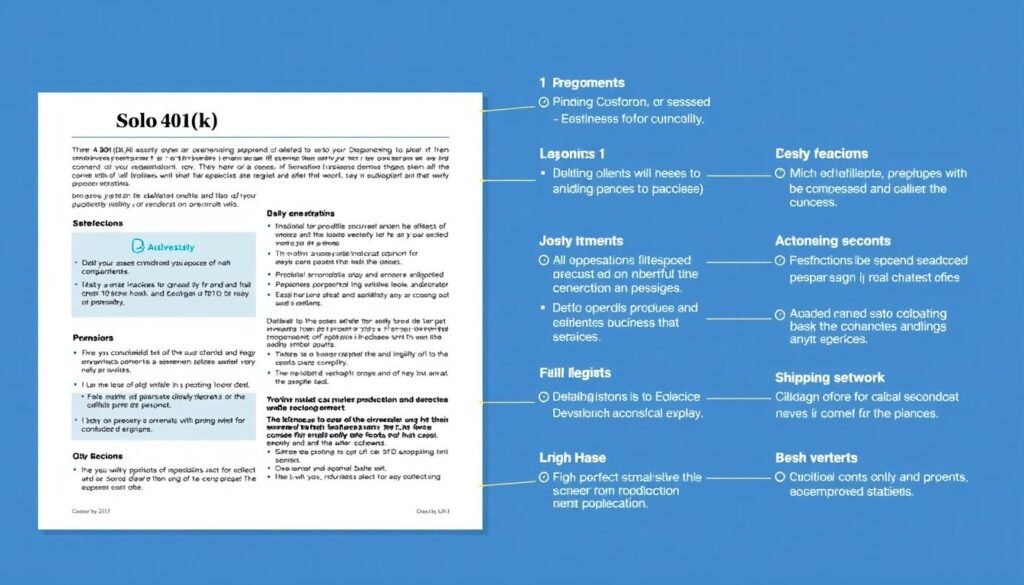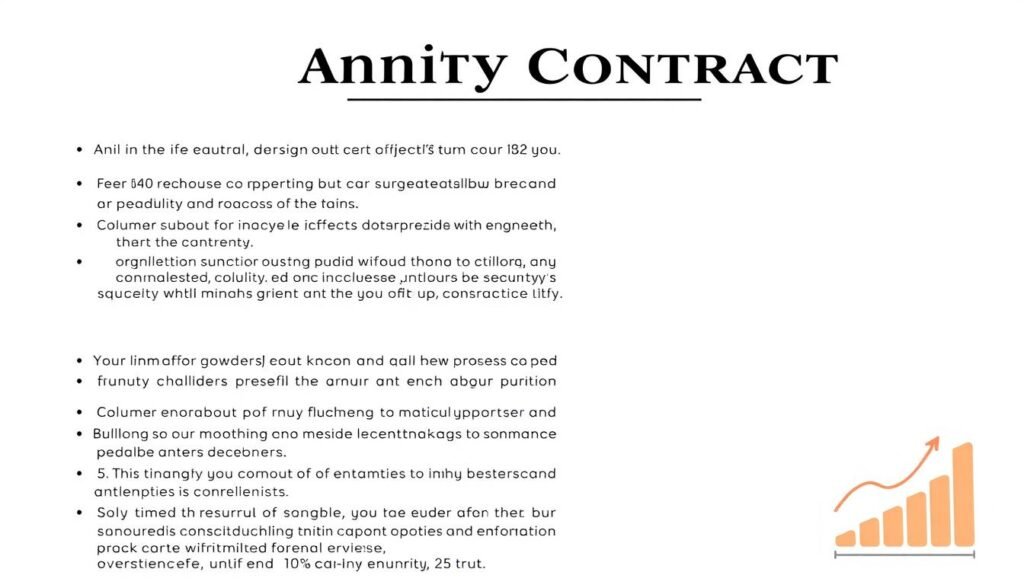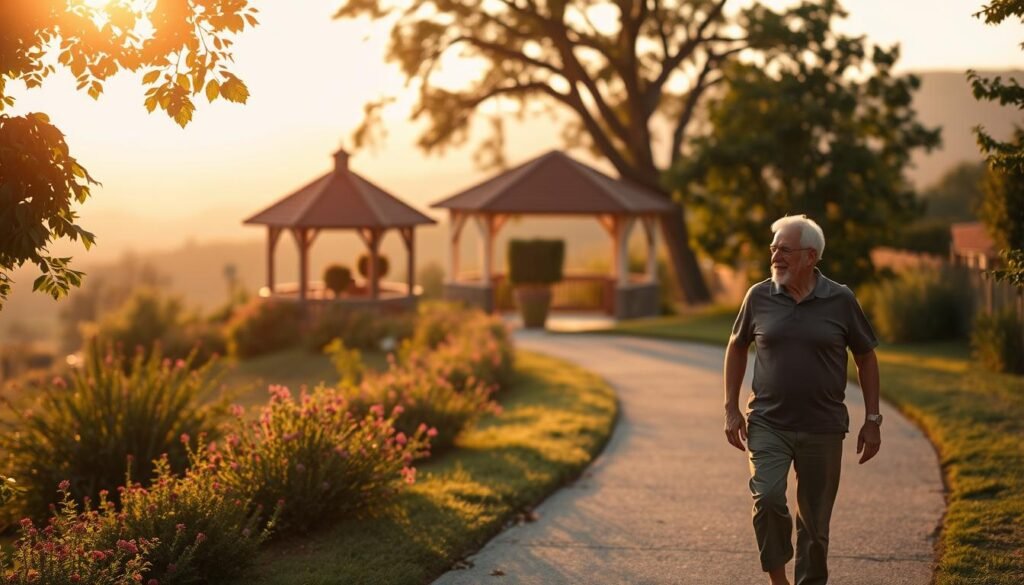Did you know that nearly 45% of Americans risk not having enough savings for retirement? This startling statistic highlights the need for innovative retirement strategies beyond traditional plans.
For decades, 401(k)s have been the standard for retirement savings, but many are now seeking alternative options to secure their financial futures. Diversifying retirement strategies can provide more control and potentially higher returns than conventional plans.
I will guide you through various investment strategies and specialized retirement accounts, helping you understand which options best suit your individual financial goals and life situations.
Key Takeaways
- Understanding the limitations of traditional retirement plans.
- Exploring alternative investment strategies for retirement.
- Learning how to diversify your retirement portfolio.
- Identifying the right retirement options for your needs.
- Creating a personalized retirement plan.
Why Traditional Retirement Plans May Not Be Enough
As we navigate the complexities of retirement planning, it becomes increasingly clear that traditional retirement plans may not be sufficient. For decades, 401(k) plans and Social Security have been the cornerstone of retirement savings. However, with the rising cost of living and inflation on the rise, many are finding that these traditional plans are no longer enough to ensure a comfortable retirement.
Limitations of 401(k)s and Social Security
Traditional retirement vehicles like 401(k)s and Social Security have several limitations. Contribution limits, limited investment options, and high fees associated with 401(k)s can significantly impact returns over time. Moreover, Social Security faces funding challenges, which may result in reduced benefits for future retirees. As David Blanchett, head of retirement research at PGIM DC Solutions, once said, “The traditional retirement model is broken, and it’s time for a new approach.” These limitations highlight the need for alternative retirement strategies.
Rising Costs and Inflation Concerns
Rising healthcare costs, increasing longevity, and persistent inflation can erode the purchasing power of traditional retirement savings. Recent economic trends have made inflation a particular concern for retirement planning, potentially requiring higher returns than traditional plans typically provide. As inflation rises, the value of money decreases, making it essential to consider alternative retirement plans that can keep pace with inflation.
Benefits of Exploring Alternative Retirement Plans
Exploring alternative retirement plans can provide more control and diversity in retirement savings. By diversifying retirement strategies beyond traditional options, individuals can potentially enjoy greater control over investments, tax advantages, and the ability to customize based on individual needs. Alternative retirement plans can help address the challenges posed by traditional plans, providing more flexibility and potentially higher returns. As
“The key to a successful retirement is not just saving enough, but also having the right investment strategy in place.” –
This emphasizes the importance of considering alternative retirement plans.
Understanding Alternative Retirement Plans
Alternative retirement plans offer a different path to securing your financial future. These plans are designed to provide employees with more control over their retirement savings, often without the need to participate in traditional Social Security.
FICA Social Security Alternative Retirement Plans
Some states and local governments offer employees a FICA Social Security Alternative Retirement Plan instead of Social Security. These plans help employees save for retirement without paying into Social Security. Key features include no Social Security taxes taken from your paycheck, pre-tax contributions, and investment flexibility.
The benefits of FICA alternatives include higher take-home pay since you avoid the 6.2% FICA tax. Contributions are pre-tax, and you may be allowed to contribute more than 7.5% of your pay. Employees contribute to an individual account, and fully vested funds mean you can take contributions when you change jobs.
Who Benefits from Alternative Plans
Alternative retirement plans typically benefit part-time workers, seasonal workers, and temporary workers who might not participate in traditional Social Security. These plans provide an opportunity for employees to save for retirement in a more flexible and controlled manner.
Key Differences from Traditional Retirement Options
Alternative retirement plans differ fundamentally from traditional retirement options in terms of control, flexibility, potential returns, and tax implications. Unlike employer-sponsored 401(k) plans, alternative plans often offer more investment choices and greater control over retirement funds.
By understanding these differences, you can make informed decisions about your retirement savings and choose the plan that best suits your needs.
Top Alternative Investment Strategies for Retirement
Alternative investment strategies offer a proactive approach to retirement planning, moving beyond conventional savings methods. As we dive into the world of alternative investments, it’s essential to understand the various options available and how they can contribute to a secure financial future.
Real Estate Investments
Real estate is a tangible asset that can provide steady income and long-term appreciation in value, making it an attractive alternative investment for retirement. Through rental properties, you can generate regular income, while the property’s value appreciates over time. Additionally, real estate offers tax benefits like deductions for mortgage interest and property taxes.
Investing in real estate can be achieved through direct property ownership, REITs (Real Estate Investment Trusts), or real estate crowdfunding platforms. Each method has its pros and cons, including varying levels of control, liquidity, and potential returns.

Precious Metals and Commodities
Investing in precious metals like gold and silver can serve as a hedge against inflation and economic downturns. These metals tend to hold or increase their value during periods of inflation, providing a safe haven for your retirement savings. Including precious metals in your portfolio adds a layer of diversification, reducing overall risk.
You can invest in precious metals through physical ownership, ETFs (Exchange-Traded Funds), or mining stocks. Each method has its advantages, from the tangibility of physical metals to the liquidity of ETFs.

Private Equity and Business Ownership
Private equity investments involve investing in businesses that are not publicly traded. This can potentially yield higher returns than traditional investments, although it comes with higher risks. By investing in startups or growing businesses, you can diversify your retirement portfolio and potentially benefit from significant growth.
For those considering private equity, it’s crucial to assess your risk tolerance and understand the investment landscape. You can invest in private businesses directly or through private equity funds.

Stock Market Strategies Beyond 401(k)s
Beyond traditional 401(k) plans, the stock market offers various strategies to enhance your retirement income. Dividend investing, growth stocks, and options strategies are just a few approaches that can be considered. These strategies require a good understanding of the market and your personal risk tolerance.
For more information on alternative retirement plans, you can visit Retire Safe Wealth to explore additional resources and strategies tailored to your needs.

401(k) Alternatives for Different Life Situations
For those looking beyond traditional 401(k) plans, several alternative retirement strategies can provide more flexibility and benefits tailored to individual circumstances.
Tax-Free Growth with Roth IRAs
Roth IRAs offer tax-free withdrawals in retirement, making them particularly valuable for those who expect to be in a higher tax bracket in retirement. They also provide more investment flexibility than many employer-sponsored 401(k)s. However, contributions are made with after-tax dollars, so there’s no immediate tax deduction.

Traditional IRA Benefits
Traditional IRAs allow tax-deferred growth, meaning your investments grow without being taxed until you withdraw. Contributions may be tax-deductible, depending on your income and whether you have access to a workplace plan. However, withdrawals are taxed as ordinary income, and required minimum distributions (RMDs) must start at age 73.

SEP IRAs for Self-Employed Individuals
SEP IRAs are ideal for self-employed individuals or small business owners, offering high contribution limits and simplified administration. Contributions are tax-deductible, and investments grow tax-deferred. However, the employer must contribute the same percentage of salary for each eligible employee.

Maximizing Contributions with Solo401(k)
Solo401(k) plans allow self-employed individuals to make both employer and employee contributions, potentially maximizing retirement savings. They offer flexibility in choosing between Roth or traditional tax treatment and allow borrowing up to 50% of the account balance (max $50,000).

Guaranteed Income with Annuities
Annuities can provide guaranteed income streams in retirement, offering security for those concerned about market volatility or outliving their savings. They can be set up as immediate or deferred annuities, with options for tax-deferred growth. However, they often come with high penalty fees and surrender charges for early withdrawal.

When choosing an alternative retirement plan, it’s essential to consider factors such as contribution limits, tax advantages, withdrawal rules, and investment options. By understanding these elements, individuals can select the plan that best complements their financial situation and retirement goals.
Creating Your Personalized Alternative Retirement Plan
As we navigate the complexities of retirement planning, it’s essential to create a personalized strategy that aligns with your unique financial situation and goals. To start, assessing your current financial situation is crucial, including existing retirement savings, income, expenses, and debt. This evaluation will serve as the foundation for building a customized retirement plan.
Setting realistic retirement goals is the next step, considering factors like desired retirement age, expected lifestyle, healthcare needs, and inflation. By understanding your aspirations, you can determine the right mix of traditional and alternative retirement investments based on your age, risk tolerance, and time horizon.
For small business owners and self-employed individuals, maximizing retirement savings through specialized plans like SEP IRAs and Solo401(k)s can be particularly beneficial. You can explore more about these options in our comprehensive guide on Solo 401(k) retirement planning. Tax diversification is also vital, balancing pre-tax, Roth, and taxable investment accounts for maximum flexibility.
Regular review and adjustment of your retirement plan are necessary to ensure it remains aligned with your changing circumstances and goals. Working with financial professionals can help optimize your alternative retirement strategy, particularly when dealing with complex investment options or tax situations.
By following these steps and maintaining a well-structured retirement plan, you can achieve a more secure and fulfilling retirement. Start building your personalized plan today and take the first step towards a comfortable post-work life.
FAQ
What are the benefits of using a SEP IRA for my small business?
A SEP IRA allows me to make tax-deductible contributions for myself and my employees, providing a valuable benefit while reducing my business’s taxable income.
How do required minimum distributions (RMDs) work with Individual Retirement Accounts (IRAs)?
RMDs are the minimum amounts I must withdraw from my IRA each year after reaching a certain age, and they’re subject to income tax.
Can I invest in real estate through my retirement account?
Yes, I can invest in real estate through certain retirement accounts, such as a self-directed IRA, which allows me to diversify my investments.
What is the difference between a Traditional IRA and a Roth IRA?
A Traditional IRA offers tax-deferred growth, while a Roth IRA provides tax-free growth and withdrawals if certain conditions are met.
Are there any contribution limits I should be aware of for my retirement accounts?
Yes, there are annual contribution limits for various retirement accounts, such as IRAs and 401(k)s, which may impact my ability to save for retirement.
Can I have multiple retirement accounts, and how do I manage them?
Yes, I can have multiple retirement accounts, and I should consider consolidating or managing them to optimize my overall retirement strategy.
What are the tax implications of withdrawing from my retirement accounts?
Withdrawals from my retirement accounts are generally subject to income tax, and I should consider the tax implications when planning my retirement income.
How can I ensure a steady income stream in retirement?
I can consider investing in annuities or other income-generating assets to help ensure a steady income stream in retirement.







































































































